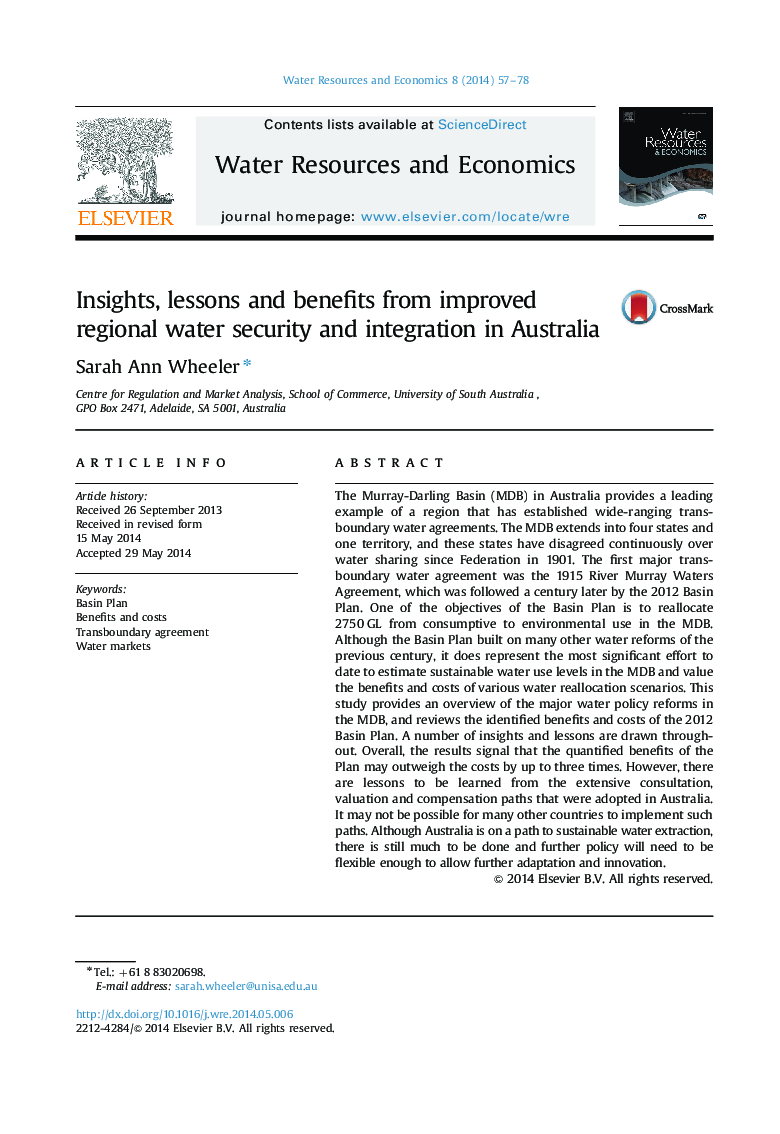| Article ID | Journal | Published Year | Pages | File Type |
|---|---|---|---|---|
| 988260 | Water Resources and Economics | 2014 | 22 Pages |
The Murray-Darling Basin (MDB) in Australia provides a leading example of a region that has established wide-ranging transboundary water agreements. The MDB extends into four states and one territory, and these states have disagreed continuously over water sharing since Federation in 1901. The first major transboundary water agreement was the 1915 River Murray Waters Agreement, which was followed a century later by the 2012 Basin Plan. One of the objectives of the Basin Plan is to reallocate 2750 GL from consumptive to environmental use in the MDB. Although the Basin Plan built on many other water reforms of the previous century, it does represent the most significant effort to date to estimate sustainable water use levels in the MDB and value the benefits and costs of various water reallocation scenarios. This study provides an overview of the major water policy reforms in the MDB, and reviews the identified benefits and costs of the 2012 Basin Plan. A number of insights and lessons are drawn throughout. Overall, the results signal that the quantified benefits of the Plan may outweigh the costs by up to three times. However, there are lessons to be learned from the extensive consultation, valuation and compensation paths that were adopted in Australia. It may not be possible for many other countries to implement such paths. Although Australia is on a path to sustainable water extraction, there is still much to be done and further policy will need to be flexible enough to allow further adaptation and innovation.
